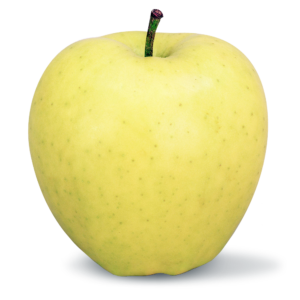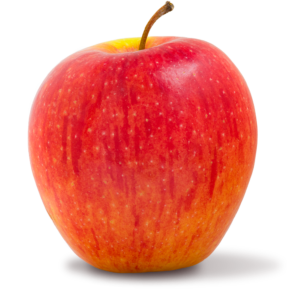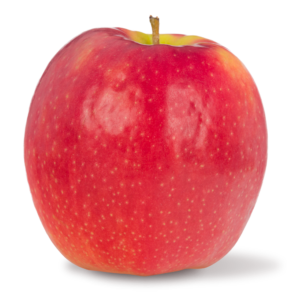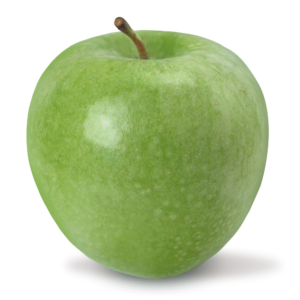The Best Apples for Apple Pie
|
This post originally published in September 2015.
Apple pie is a classic dessert that transcends generations. It’s a mainstay for many holidays (including Thanksgiving) and a symbol of American culture. Admittedly, it’s not what I would call the easiest pie to make from scratch, but it offers that belly-warming eating experience that makes all the peeling, slicing, and spicing effort worth it.
If you talk to an apple connoisseur (people that are pretty easy to find in our world of growing apples), then you’ll learn that apples are not created equally, and that (gasp!) many are not suited for apple pie. There are many types of apples available at grocery stores today – and more coming all the time. The emergence of new varieties is exciting because we get to try new flavors and elevate the apple eating experience, but it can also be a bit daunting to figure out how to use these new varieties in the kitchen. So, let us tell you the best apples for apple pie! We’ll share the names and what makes them great for apple pie. We’ll also tell you which apples to NOT put in apple pie, and how to best use those apple varieties instead.
The most important attribute in a good apple pie apple is that the fruit’s flesh won’t break down from the high oven temperatures we use when we bake an apple pie. If we don’t use the right apple, we’ll have a mushy experience and a pie filling that lacks the layers and depth that make apple pie so incredible. Red Delicious and Gala are two apples that won’t withstand cooking temperatures and should not be used for apple pie. Many new apple varieties, including Honeycrisp, have a flesh that fractures when you bite it. This is so appealing for snacking on an apple, but not the best feature for a good apple pie apple.
Beyond the flesh, you also want to avoid apples that are overly juicy. It’s not that those apples aren’t delicious, but the added juice will make the filling soupy. You can use cornstarch or flour to counteract extra juice, but it’s an addition that is not necessary if you start off with the right apples. Fuji and McIntosh are both juicy apples. The new Honeycrisp-cross apples, like our Rave®, are also too juicy for apple pie. Instead, use these delicious apples when snacking or in a fresh application like a cheeseboard or salad.
A sweet and tart – or balanced – flavor profile is the third element that we look for in a good apple pie apple. Fruit with naturally higher acids will limit the need for extra ingredients (like a lemon or a quince) that offer that acidity. Likewise, an apple that is naturally high in sugar will allow the baker to use less added sugar for sweetness.
There are five apples that I’d classify as the best apples for apple pie. Each is a well-known apple that will be (fairly) easy to find at a grocery store throughout the year. So, let’s get to it: which apples are the best for apple pie?
The Best Apples for Apple Pie:

Golden Delicious Apples:
This classic American variety has a beautiful yellow skin and mellow sweet flavor that makes it one of the best baking apples. The flesh of Golden Delicious is somewhat silky in texture and won’t break down during the higher temperatures needed to bake an apple pie. If you are going to make an apple pie with Golden Delicious, you are going to want a source for acid. You can pair it with a tart apple (like Granny Smith) or choose a lemon or quince to give it that flavor balance.

Piñata® Apples:
Stemilt’s signature apple, Piñata® brand Pinova cultivar apples, bring a trio of apple flavors together in one. Piñata® was bred in Germany in the 1970s through traditional cross-pollination methods. Its parents are Golden Delicious and two heirloom varieties from Europe, Cox’s Orange Pippin and the Duchess of Oldenburg. The same great baking texture from Golden Delicious makes Piñata® a great baking apple. It can take the heat! Cox’s Orange Pippin adds a juicy and acidic flavor to Piñata® apples that Golden Delicious is otherwise lacking. For those who like a sweet and tart apple pie, Piñata® is a great choice to use as a standalone or alongside other baking apples. It’s in season nearly year-round, with availability in grocery stores usually starting in January and lasting through the summer.
 Pink Lady® Apples:
Pink Lady® Apples:
With Granny Smith parentage, Pink Lady® brand apples are another great variety to use for baking an apple pie. This apple is well-known for its vibrant pink skin, but also has a balanced sweet-tart flavor and effervescent finish. Pink Lady® apples can be a bit smaller in size than other varieties (since they are the last off the tree each fall), so it may take more apples and peeling to make a pie, but the unique flavor it offers certainly makes this one worthy of putting into an apple pie. Like Granny Smith and Pinata®, I would skip the added lemon or quince if you go all Pink Lady® with your pie.
Apple pie isn’t the only thing Pink Lady® apples are good for. Check out this pink applesauce!
 Granny Smith Apples:
Granny Smith Apples:
This type of apple is famous for its lime green color and tart flavor. While tartness isn’t a quality that many love in an apple pie, Granny Smith works great because of the added sugar that most apple pie recipes call for. This one takes me back to my childhood because it was the preferred baking apple that my Mom used for making her delicious apple pies. I try to be a bit more adventurous in my own apple pies today by mixing and matching varieties, but do like to incorporate at least one Granny Smith apple. The variety holds its shape when baked and adds a great tartness to any apple pie. Skip the lemon or quince if you go the all Granny Smith apple pie route!
Rome Beauty Apples:
Nicknamed the “Baker’s Buddy,” Rome apples have a sweet and tart flavor that deepens when it is cooked. It holds its shape to cooking temperatures extremely well. The only downside to Rome is that it’s the most difficult-to-find apple variety on this list. Stemilt no longer grows Rome, but it cannot be left off a list for the best apples for apple pie list!
Which types of apples are your favorites for using when baking an apple pie? Do you prefer a sweet or tart apple pie, or something in-between? Do you have any secrets when it comes to making an apple pie?
